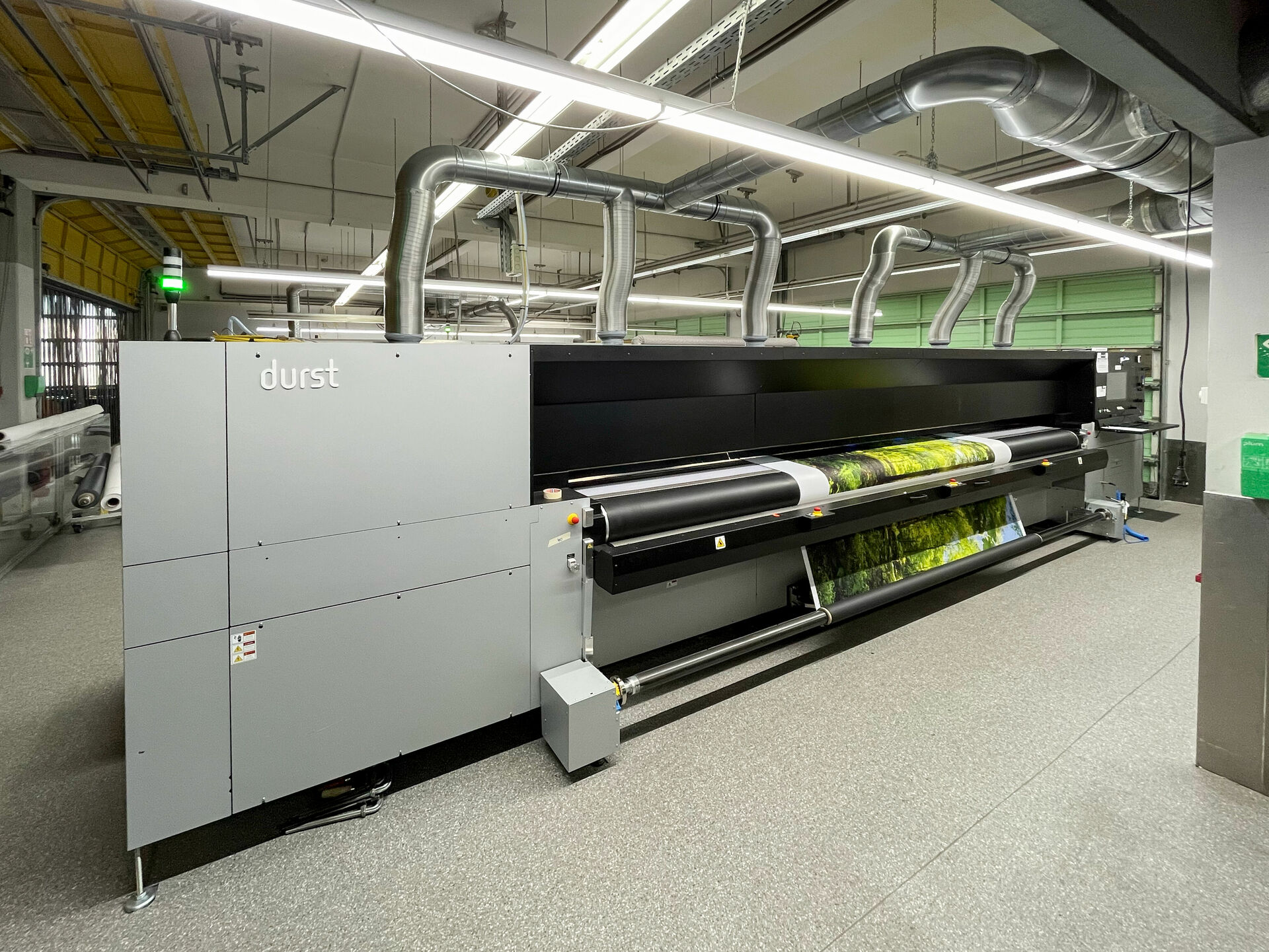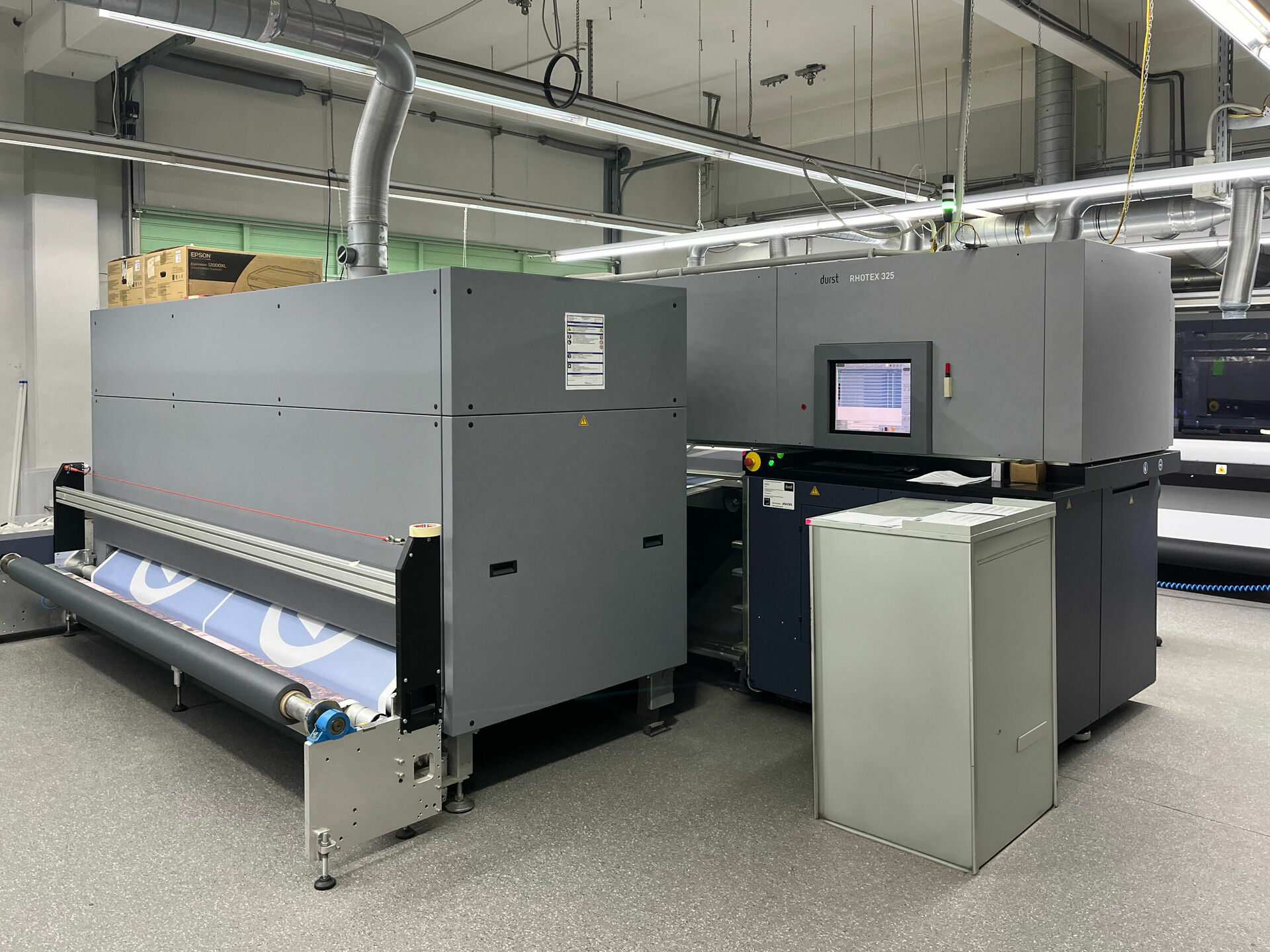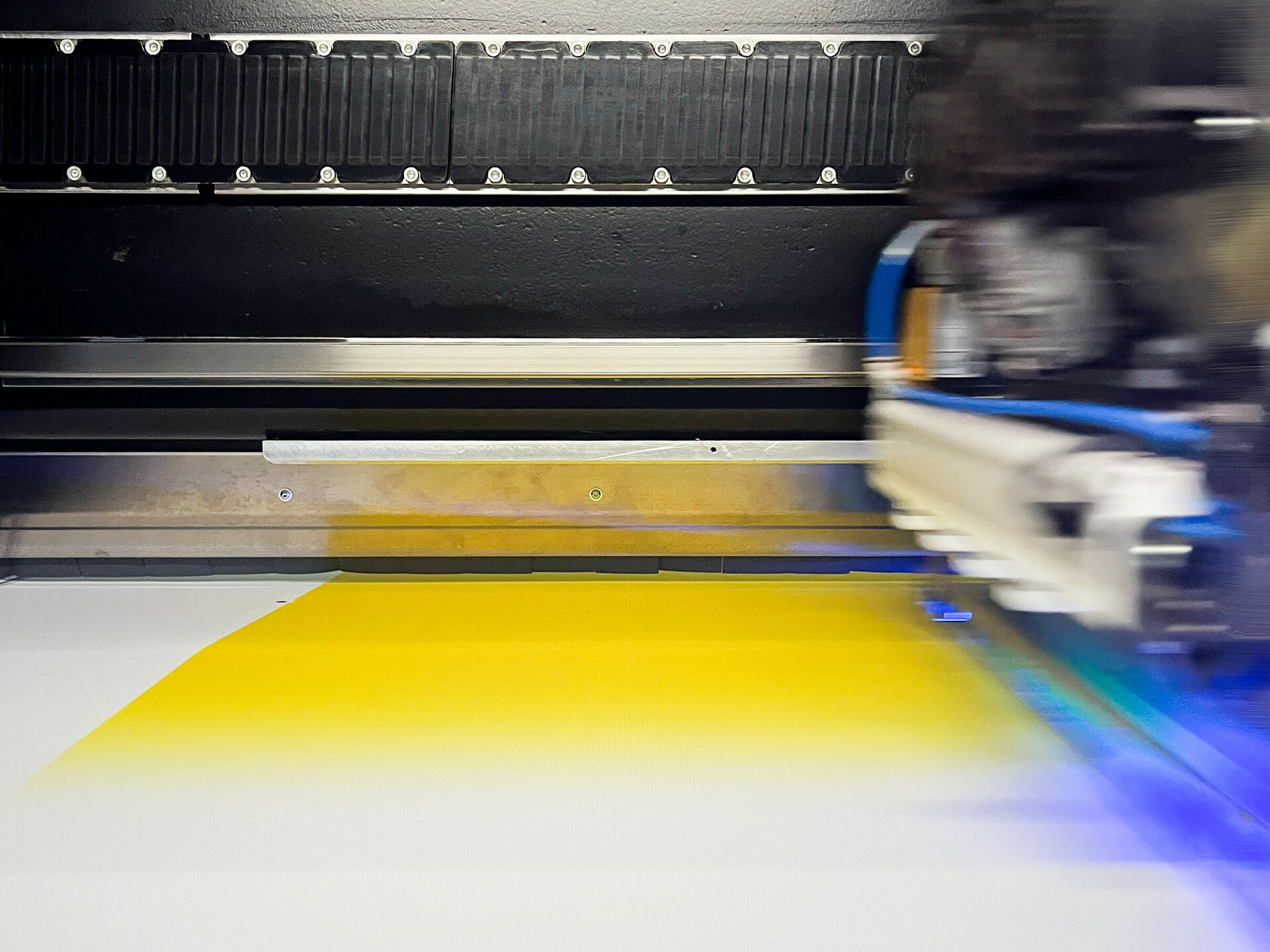When visitors step into our hall for the first time, they are captivated by the heart of our production: our enormous printers. These machines handle both dye-sublimation and UV printing, and their sheer size is impressive, stretching up to over 16 feet in length. Why so large? The dimensions are dictated by the textile industry, which supplies the materials we use in 10- and 16-foot-wide rolls.
If you’re curious about the printers, be mindful: built-in safety light barriers can automatically halt production. This feature ensures safety and is why our core units have large viewing windows, allowing us to monitor the printing process from a safe distance.
Others saddle horses; we set up printing machines -
for the respective printing processes dye-sublimation and UV printing
Setting up our machines involves preparing them for printing. We load a roll of textile into the printer, where the first and last 5 to 6.5 feet of material are used as pre- and post-runs. These sections are fed through the printer and attached to an empty cardboard core, getting the textile ready for the next stage of processing.
These pre- and post-runs are crucial. They allow the machine to secure and guide the textile properly during printing. Despite our best efforts, the beginning of a roll may have minor print marks or dirt, but this is easily managed since the leading edge isn’t printed.
Efficiency is a priority for us. We aim to use our printing presses as effectively as possible to reduce material waste. Our graphics department groups print files from various orders that require the same textile or are due on the same date. Using software, we nest orders of different sizes onto a single 16-foot-wide roll to minimize waste. This way, everything can be printed in one continuous workflow, reducing the need to reset the machines.
During printing, we add special registration dots and marks. This ensures that when the material reaches our textile processing team, our cutters know exactly where to cut with precision, down to the millimeter. This happens in our ready-made department before the material is processed for its final purpose.
Initial or test prints are always labor-intensive. Our machines must be fully set up even if only a small section of a 16-foot-wide material is printed.
Dye-sublimation printing requires more effort compared to UV printing. With UV printing, the inks cure immediately within the machine. In dye-sublimation, however, the printed material must pass through a heat calender to set the colors permanently. For smaller proofs, we use a T-shirt press, which simulates the effect of a large calender but with significantly less energy and effort.
Textiles are sensitive to temperature and humidity, expanding or contracting based on environmental changes. To maintain consistency, we use humidifiers in our production halls to keep humidity levels stable. Additionally, slatted curtains separate our printing area from other rooms, preventing cold air from entering and keeping the temperature steady. These measures ensure we achieve the highest quality prints possible.

![[Translate to English:] Innenansicht eines Großformatdruckers](/fileadmin/_processed_/f/8/csm_P5_IMG_6292_35a20107a6.jpg)

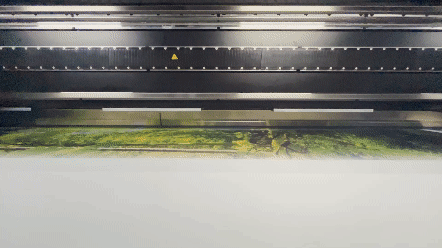
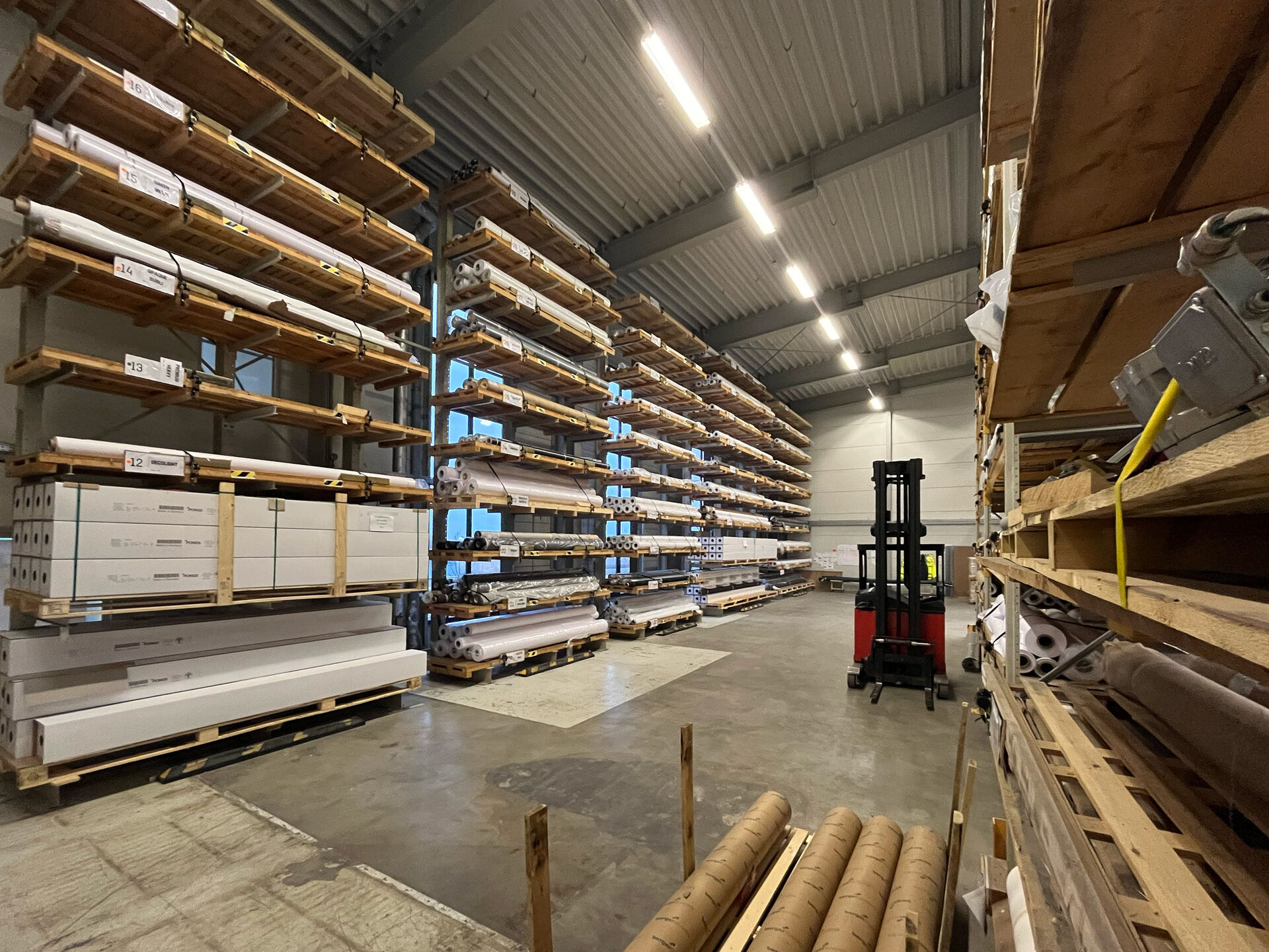
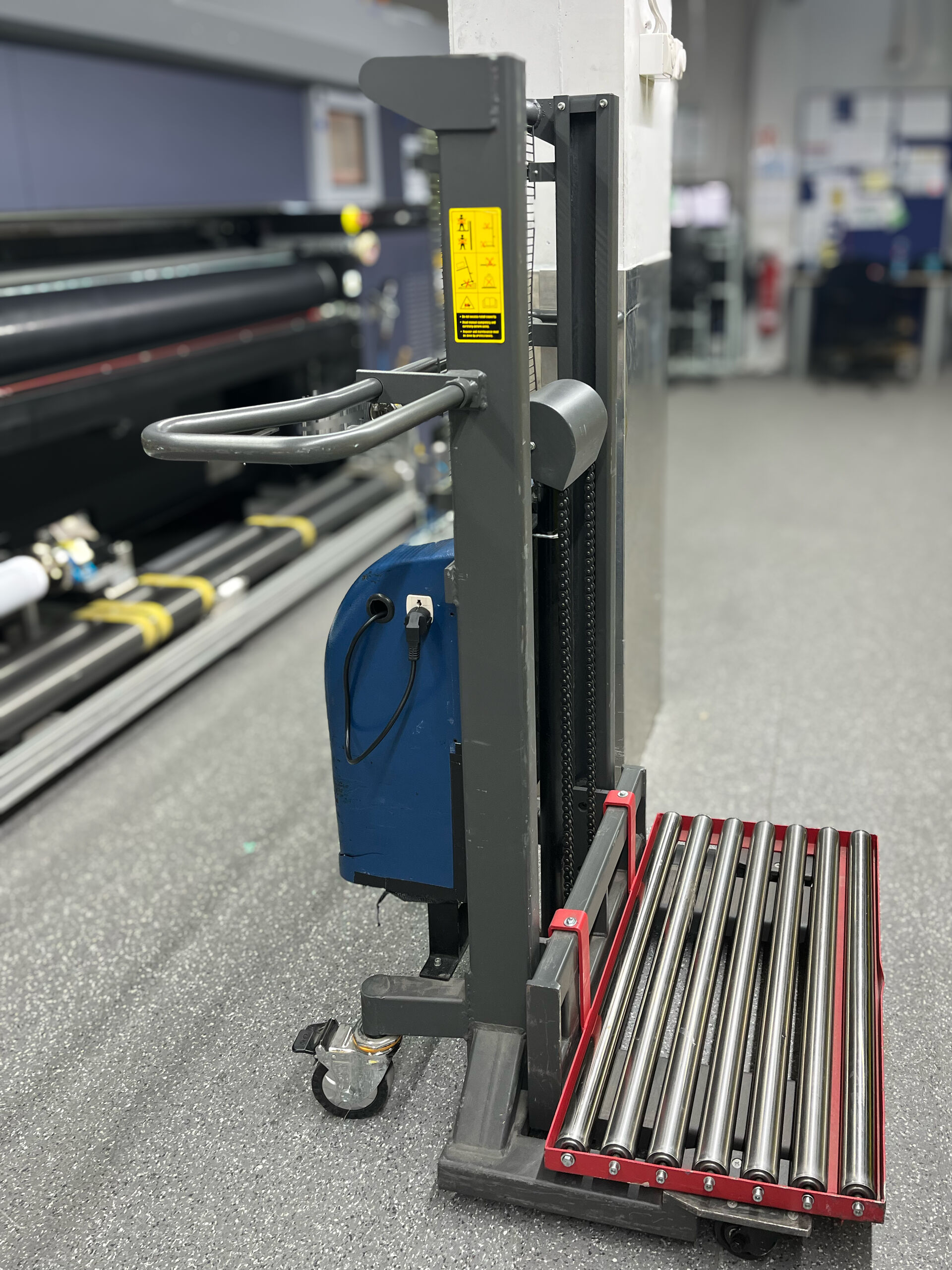
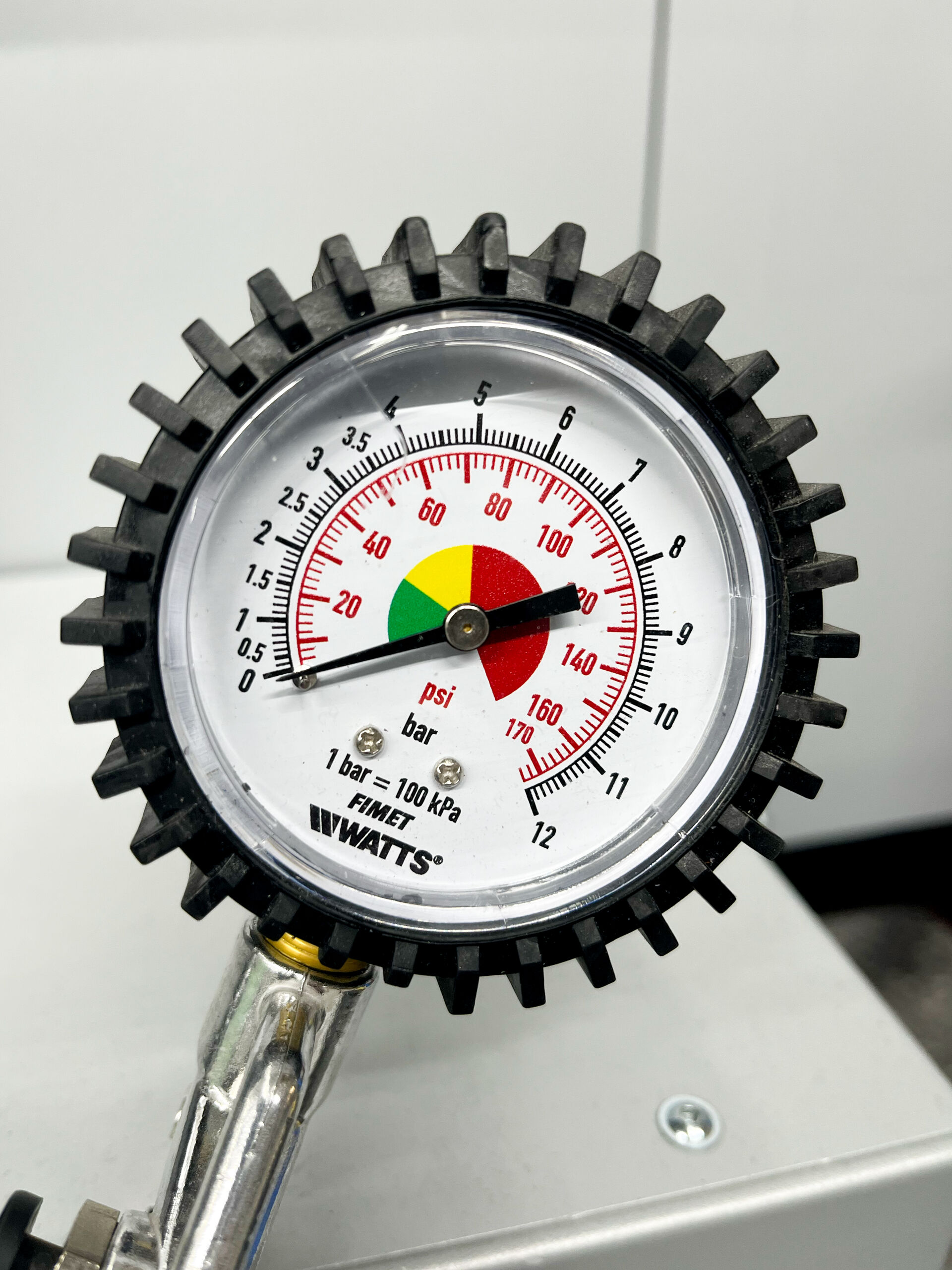
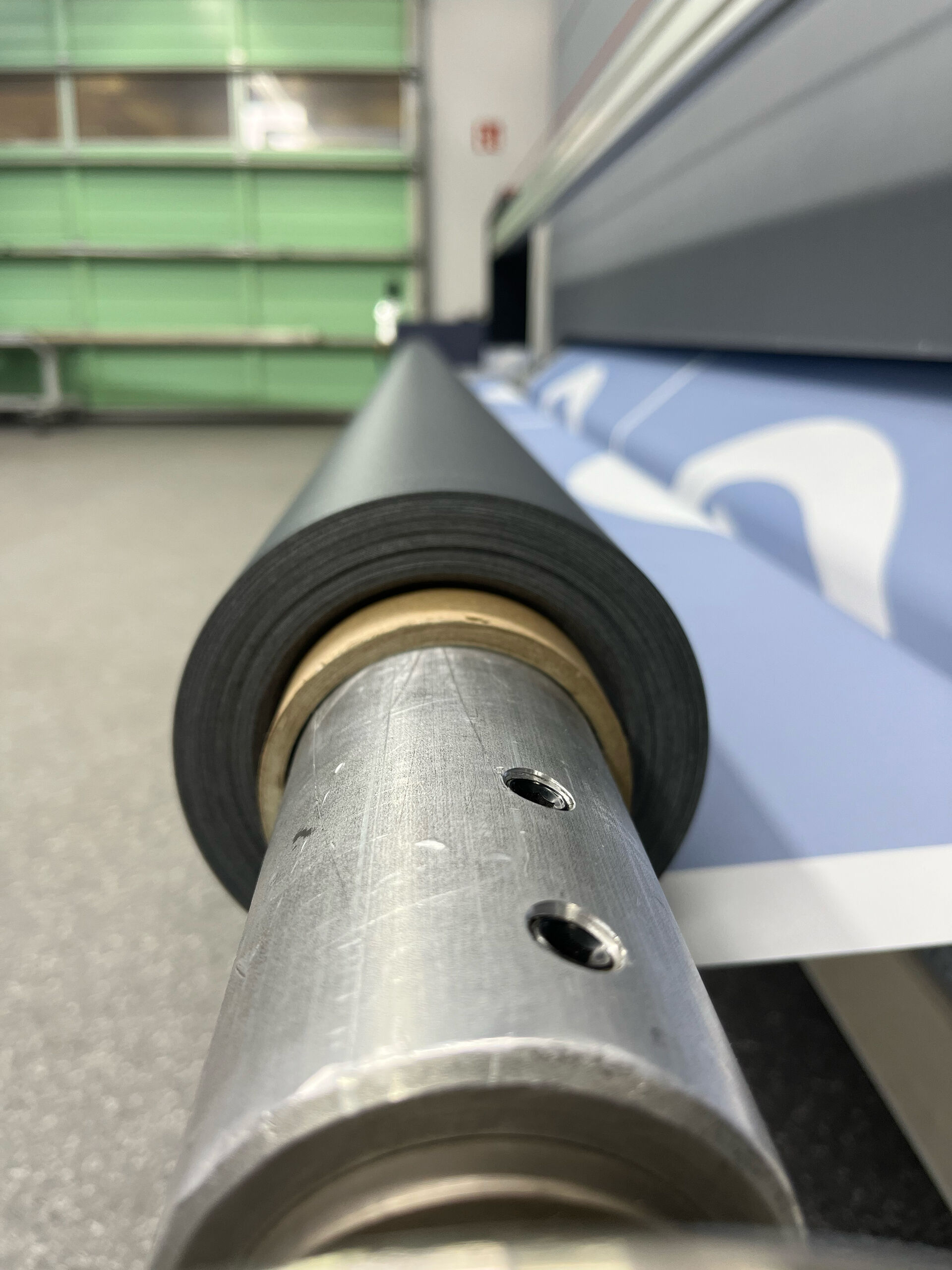
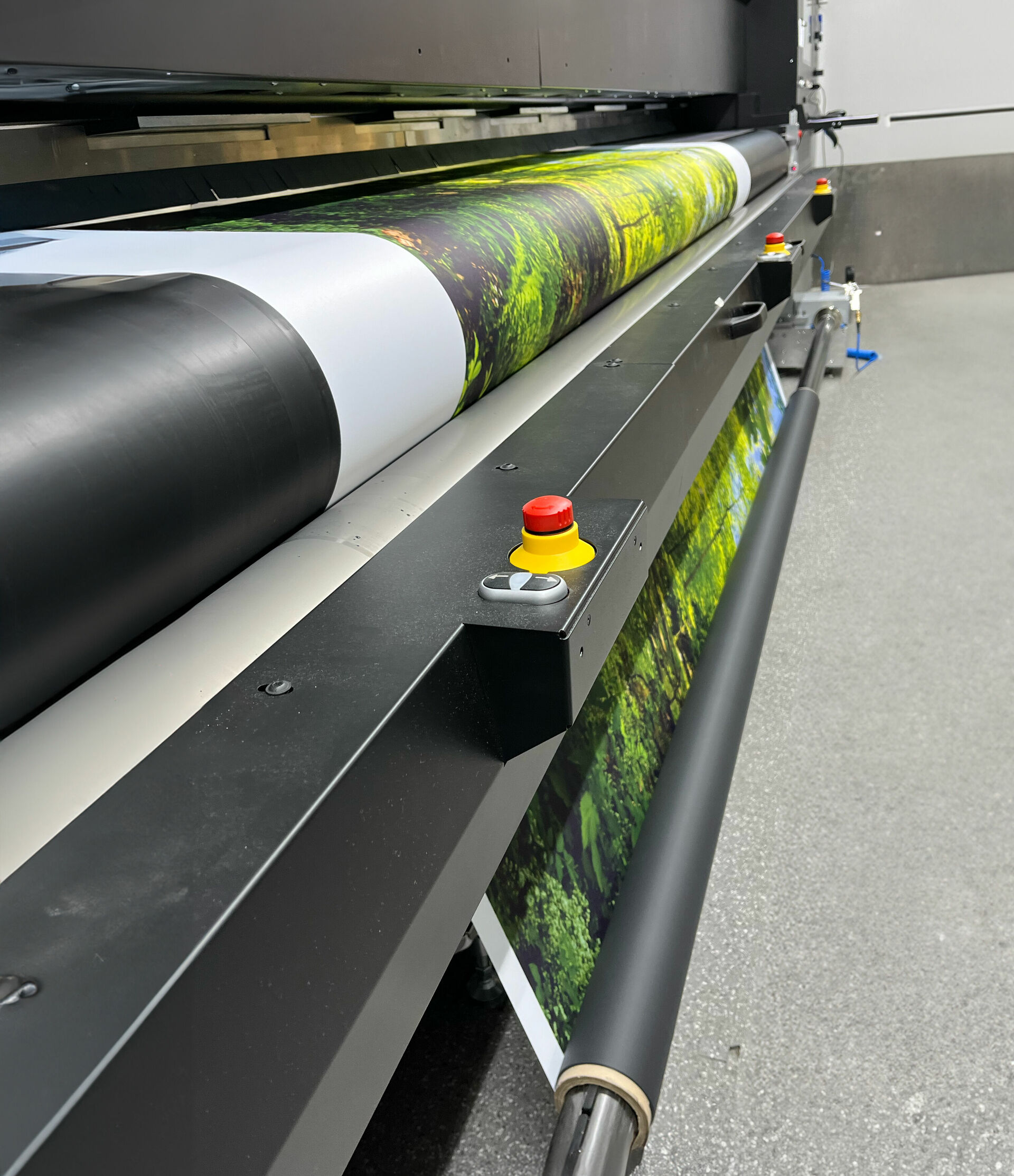
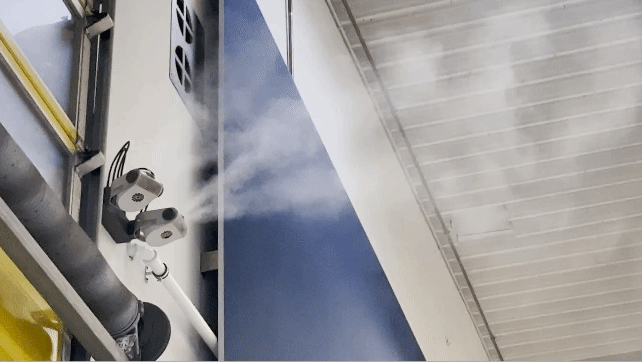
![[Translate to English:] Round textile sculptures in white hang from the ceiling.](/fileadmin/_processed_/f/7/csm_cta-procedes_b2c2ad64de.jpg)

